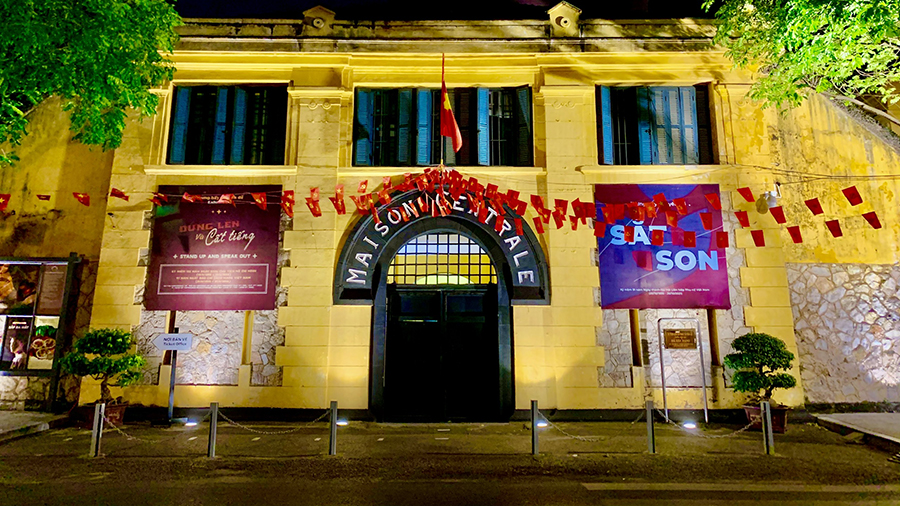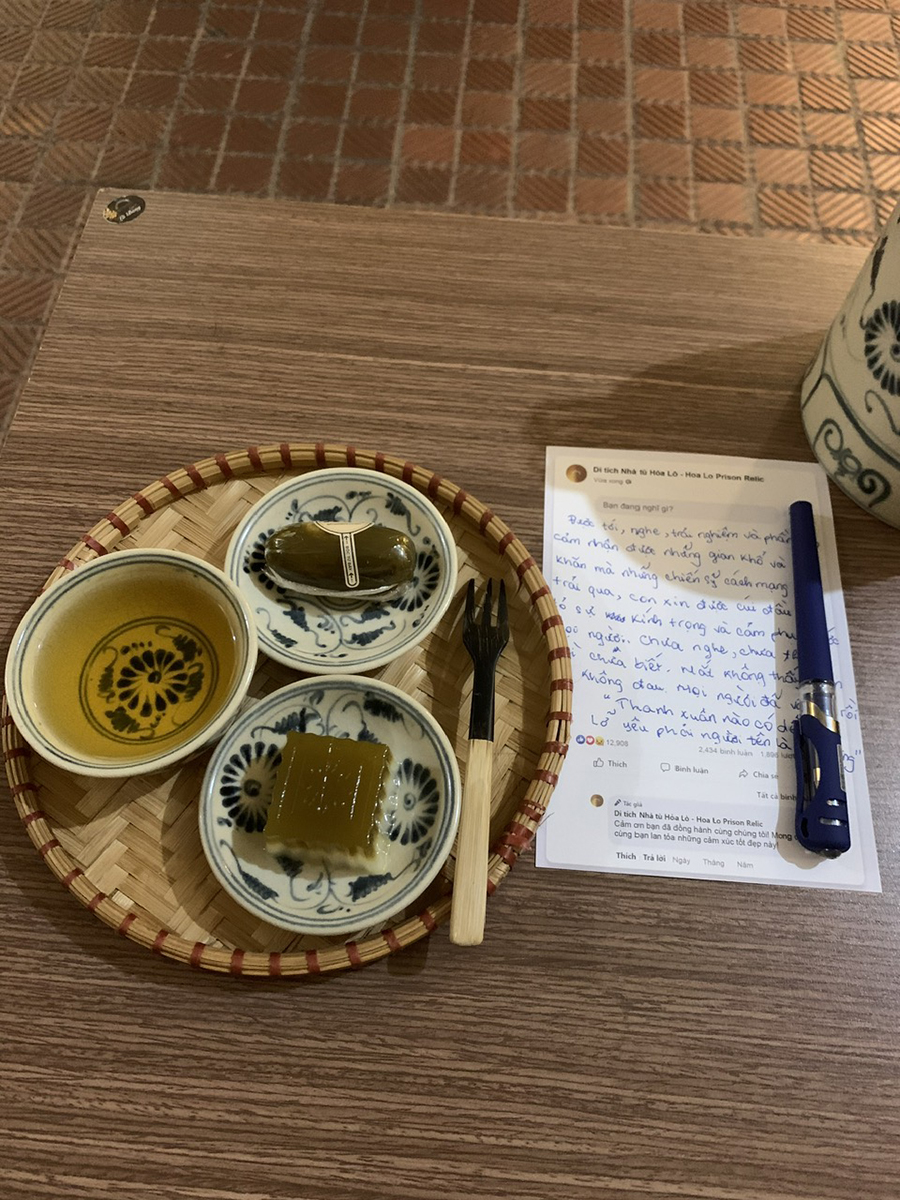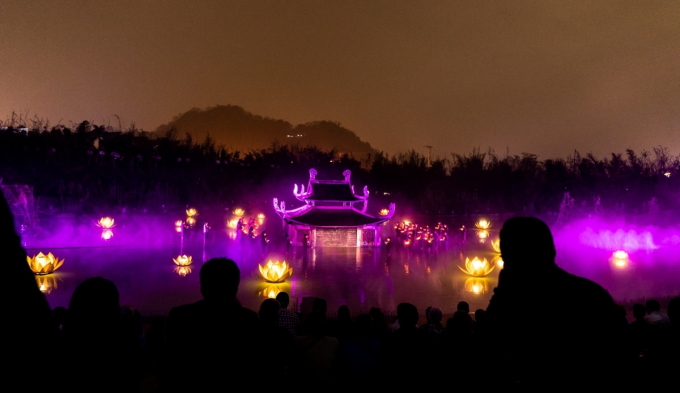Hoa Lo Prison relic: the strong determination of Vietnamese revolutionaries and sacrifices
First built during the French Colonial Era and named “Maison Centrale”, it incarcerated Vietnamese revolutionaries and political dissidents, a crucible through which many leaders of the Vietnamese resistance passed. The name Hoa Lo, which translates as “stove,” “fire kiln,” or “fiery furnace” comes from a village name, specializing in making all kinds of casserole, portable earthen stove… later on being occupied by the French to build up the prison and court as being seen today.
Having a prime location in the heart of Hanoi, tourists can easily reach this attraction from any part of the city. There are some popular means of transportation to choose from, including public bus, motorbike, taxi, and car. From 8.00 am to 5.00 pm every day (including holidays), visitors can freely explore this historic relic and may join the night tour also.
Photo: TITC
Visitors to Hoa Lo Prison will have an opportunity to see exhibits that show the prison’s history in two different periods. The first period is from when French colonialists erected the prison in 1896 until the liberation day of Hanoi (October 1954). The second period is from 1964 to 1973, when the Vietnamese government used a section of the prison to house American pilots. Inside the prison, you will see an ominous French guillotine, horrifying iron shackles, brutal torture instruments, as well as statues of captives wearing leg chains. The Vietnamese prisoners were mercilessly tortured and beaten on a daily basis by the guards here. Tortures included electric shock, upside-down hanging, and bad rice feeding. This prison will enhance your perspective, understanding, and appreciation for the revolutionary fighters’ spirit, as well as the Vietnamese people’s humane approach toward American prisoners during the war.
Launched in July 2020, the Hoa Lo Prison night tour runs on Friday, Saturday, and Sunday, starting from 7 PM and lasting 90 minutes. The main focus of both the museum and the night tour is on highlighting the experience of the Vietnamese revolutionaries incarcerated here during the French Colonial Era.
A general briefing on the history of Hoa Lo will be given while visitors enter the gate, where they are shown a model reconstruction of the prison at its height. Past this point, the experience begins in earnest. The tour utilizes a carefully crafted landscape of lights and sounds to bring visitors inside the life of the prison, with dark lighting and ambient sounds creating a brooding, oppressive atmosphere. This gives visitors a small taste of the harsh conditions and suffering endured by the prisoners who would become Vietnamese national heroes, and a chance to marvel at their resilience and strong spirits. Visitors are brought to the cell block for male prisoners, a single room of bare concrete with a bucket latrine in the corner, where prisoners are shackled in two rows on long slab tables. With only 15 minutes a day provided for them to move around and wash, this room may as well have been the entire world for the revolutionaries who spent their days bound at the ankle and sandwiched between their comrades. The room is filled with life-sized replicas of these prisoners, lit up by the only bright lights to be found, on whose ceramic faces the ravages of starvation and torture are evident. Visitors on the night tour are given a chance to see the tunnels through which they escaped, complete with a replica of inmate Vo Duc Chinh cutting through the bars.
Tourgoers will also visit the solitary confinement cells, where the most troublesome of prisoners were punished. In the female cell block, they are given a chance to learn about the life of martyr Nguyen Thi Quang Thai, the first wife of General Vo Nguyen Giap, who was held in prison until her death. Other highlights of the tour include a preserved French guillotine used to execute inmates, and a tropical almond tree (Bang) from which prisoners gathered almonds, made medicine, and carved flutes and chopsticks. The final destination of the tour is a memorial space dedicated to the prisoners who sacrificed their lives for Vietnam, where visitors can offer incense and sit for a moment of silent contemplation.
After the tour, visitors will be offered a cup of tea, a pastry and a jello made from Bang leaves to refresh the emotion.
Photo: TITC
Sacred Night 1: Shining Vietnamese spirit.
Sacred Night 2: Live like flowers, focusing on honouring the revolutionary soldiers and prisoners who lived and fought heroically at Hoa Lo Prison; every Friday night; Age: 8-75 years old.
Sacred Night 3: Youthful Fire, honouring young heroes, those eighteen and twenty who fought bravely and died heroically right here. Hoa Lo Prison is the revolutionary school where steel spirits are forged; every Saturday night; Age: 10 – 75 years old.
Address: No. 1 Hoa Lo Street, Tran Hung Dao Ward, Hoan Kiem District.
Time: 19:00 – 21:00, every Friday and Saturday night.
Ticket price: Depending on the theme tour.
Besides Hoa Lo Prison, there are many other famous cultural and historical sites in Hanoi that you should take time to visit, such as the Presidential Palace, Turtle Tower, Ngoc Son Temple, Ba Dinh Square, Bach Ma Temple, But Thap Pagoda, Tran Quoc Pagoda, etc.










